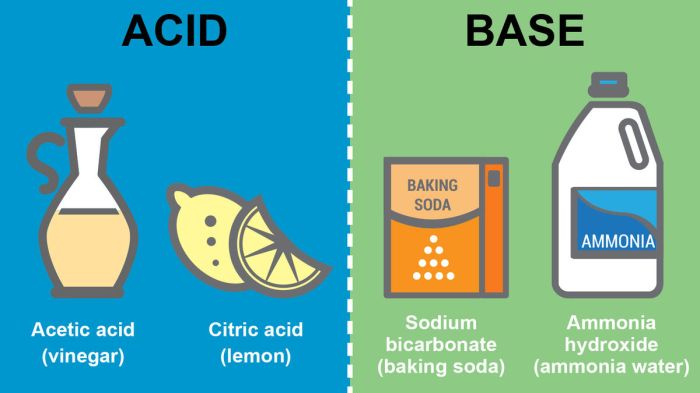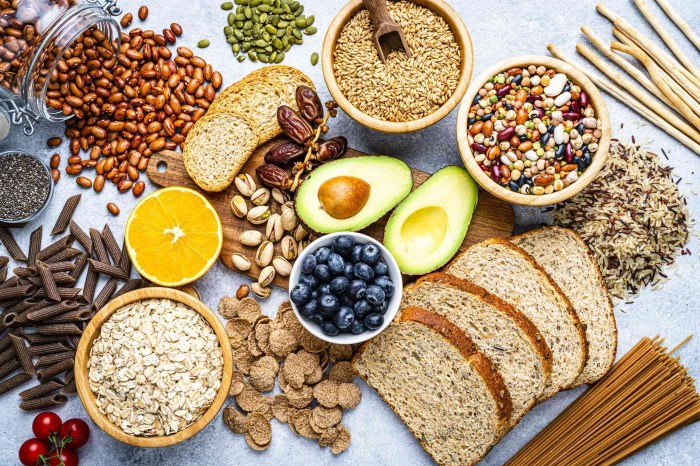The health benefits of bifobacterium – The health benefits of bifidobacterium are increasingly recognized for their positive impact on human well-being. This comprehensive exploration delves into the fascinating world of these beneficial bacteria, examining their role in digestive health, immune support, and potential impact on overall wellness. We’ll uncover how bifidobacteria work, their various species and strains, their presence in foods, and the current research surrounding their remarkable effects.
Bifidobacterium, a crucial part of the human gut microbiome, plays a significant role in maintaining a healthy digestive system. Different species of bifidobacteria may offer slightly varied benefits, but they all share a common thread of contributing to overall well-being. This exploration will examine their specific mechanisms of action, the tangible effects on digestion and immunity, and other potential advantages.
We will also discuss the importance of proper intake and the safety considerations.
Introduction to Bifidobacterium
Bifidobacterium is a diverse genus of bacteria, primarily residing in the human gut, playing a crucial role in maintaining overall health. Characterized by their unique morphology and metabolic capabilities, these beneficial bacteria contribute significantly to the gut microbiome’s balance and function. Understanding the various species and strains within this genus is essential to appreciating their diverse potential benefits.Bifidobacteria are gram-positive, anaerobic bacteria, forming part of the normal gut flora in humans and other mammals.
They are distinguished by their characteristic branching shapes, a defining characteristic that contributes to their classification. Their role in digestion, immunity, and overall well-being is becoming increasingly recognized, making them an active area of research.
Bifidobacterium Classification and Species Diversity
Bifidobacteria are categorized within the phylum Actinobacteria, and are recognized for their considerable diversity in species and strains. This diversity is reflected in their varying metabolic activities and potential health benefits. While many strains share fundamental characteristics, specific strains may exhibit unique properties.
Strains and Potential Variations in Health Benefits
Different Bifidobacterium species and strains demonstrate varying degrees of impact on human health. For instance, some strains have been shown to enhance nutrient absorption, while others may have stronger effects on the immune system. These differences in metabolic pathways and specific functionalities contribute to the diverse range of potential health benefits associated with different Bifidobacterium strains.
History of Bifidobacterium Research, The health benefits of bifobacterium
Early research into Bifidobacterium focused on its presence and role in the gut microbiome. Over time, studies have expanded to explore its potential in various health conditions, such as digestive issues and immune support. This growing body of research has led to a greater understanding of Bifidobacterium’s potential to positively influence human health, prompting the development of probiotic supplements and foods.
Comparison of Common Bifidobacterium Species
| Species | General Characteristics | Potential Health Benefits (Examples) |
|---|---|---|
| Bifidobacterium bifidum | Common in breastfed infants, known for its ability to ferment lactose and produce short-chain fatty acids. | Improved digestion, enhanced immune function. |
| Bifidobacterium longum | Found in both adults and infants, it plays a vital role in the breakdown of complex carbohydrates. | Improved bowel regularity, possible modulation of the immune response. |
| Bifidobacterium adolescentis | More prevalent in adults, often associated with lactose fermentation. | May contribute to gut health and nutrient absorption. |
| Bifidobacterium infantis | Found in breastfed infants, this species has shown potential in supporting infant development. | Possible improvement in digestion and immune development in infants. |
| Bifidobacterium animalis | Common in both adults and infants, involved in the fermentation of carbohydrates. | Potential benefits for immune system regulation, improved gut barrier function. |
Mechanisms of Action
Bifidobacterium species, a prominent part of the healthy gut microbiome, exert their beneficial effects through a multitude of intricate mechanisms. These mechanisms primarily involve their interaction with the gut environment, influencing the composition and function of the gut microbiome, and subsequently impacting overall health. Their impact extends to immune system modulation, playing a crucial role in maintaining a balanced and functional gut.The interactions between Bifidobacterium and the gut microbiome are multifaceted.
They contribute to a healthy gut environment by producing beneficial metabolites, competing with harmful bacteria, and stimulating the growth of other beneficial microbes. These interactions are crucial for maintaining a stable and functional gut ecosystem.
Bifidobacterium and Gut Microbiome Interactions
Bifidobacteria play a significant role in shaping the gut microbial community. They actively compete with potentially harmful bacteria for resources, thereby reducing their growth and influence. This competitive exclusion is a key mechanism in maintaining a healthy gut balance. Moreover, Bifidobacterium species produce various metabolites, including short-chain fatty acids (SCFAs), which have numerous beneficial effects on the host.
These metabolites provide energy to the colonocytes and contribute to a favorable gut environment.
Impact on Gut Health
Bifidobacterium species contribute to gut health through multiple pathways. They stimulate the production of beneficial metabolites, including SCFAs like acetate, propionate, and butyrate. These SCFAs are crucial for maintaining gut barrier integrity, promoting nutrient absorption, and reducing inflammation. Their influence on gut health extends beyond simple metabolic processes; Bifidobacteria also directly affect the physical structure of the gut, improving the integrity of the intestinal lining.
Role in Immune Function and Modulation
Bifidobacterium species have a profound impact on the immune system. They stimulate the development of regulatory T cells (Tregs), a crucial component of the immune system responsible for maintaining immune tolerance. These cells play a vital role in preventing excessive immune responses and maintaining overall immune balance. Furthermore, Bifidobacterium can directly interact with immune cells, modulating their activity and reducing inflammation.
Bifidobacteria are amazing for gut health, boosting immunity, and supporting overall well-being. But did you know that understanding lymphedema, a potential side effect for some breast cancer patients, can also impact your gut health? Learning more about understanding lymphedema for people with breast cancer can help you appreciate how interconnected your physical health really is. So, focusing on a balanced diet rich in probiotics like bifidobacterium is crucial for a holistic approach to health, regardless of life’s circumstances.
This interaction contributes to a healthy immune response and prevents inflammatory disorders.
Table of Bifidobacterium’s Positive Effects on the Gut
| Pathway | Mechanism | Impact on Gut |
|---|---|---|
| Metabolic Interactions | Production of short-chain fatty acids (SCFAs), like acetate, propionate, and butyrate. Competition with harmful bacteria for resources. | Improved gut barrier function, enhanced nutrient absorption, reduced inflammation, and a more favorable gut environment. |
| Immune Modulation | Stimulation of regulatory T cells (Tregs), direct interaction with immune cells, and modulation of immune responses. | Reduced inflammation, improved immune tolerance, and a more balanced immune response. |
| Gut Barrier Integrity | Direct effect on the intestinal lining, promoting a stronger and more resilient barrier. | Reduced permeability of the gut lining, preventing harmful substances from entering the bloodstream. |
Health Benefits: The Health Benefits Of Bifobacterium
Bifidobacterium, a crucial part of a healthy gut microbiome, plays a vital role in maintaining overall well-being. Its presence significantly impacts digestive health, contributing to better bowel regularity and preventing various digestive issues. This section delves into the specific mechanisms by which Bifidobacterium improves digestion and combats digestive problems, supported by scientific evidence.Bifidobacteria, a diverse group of beneficial bacteria, contribute to a balanced gut environment.
Their presence helps maintain the delicate ecosystem of the gut, impacting nutrient absorption, immune function, and overall digestive health. By promoting a healthy gut environment, Bifidobacterium directly influences digestion, preventing issues like diarrhea and inflammatory bowel disease.
Role in Preventing Diarrhea
Bifidobacteria actively compete with pathogenic bacteria for resources and space within the gut. This competition hinders the growth and proliferation of harmful microorganisms, thereby reducing the risk of diarrhea. Furthermore, Bifidobacteria produce short-chain fatty acids (SCFAs) that help maintain the integrity of the intestinal lining, making it less susceptible to harmful pathogens. This protective effect is particularly important for individuals susceptible to diarrhea from various factors, including infections or dietary changes.
A healthy gut lining, reinforced by Bifidobacteria, acts as a natural barrier against pathogens.
Improvement of Bowel Regularity
Bifidobacteria contribute to enhanced bowel regularity by promoting the fermentation of dietary fiber. This fermentation process produces SCFAs, which stimulate peristalsis, the movement of food through the digestive tract. The resulting increase in intestinal motility leads to more regular bowel movements, minimizing constipation and promoting a healthy digestive rhythm. This regularity is essential for overall digestive health and well-being.
Contribution to Preventing Inflammatory Bowel Diseases (IBD)
Bifidobacteria may play a crucial role in the prevention of inflammatory bowel diseases (IBD). Studies suggest that a balanced gut microbiome, enriched with Bifidobacterium, can help reduce inflammation in the gut. This anti-inflammatory effect is believed to be mediated by the production of SCFAs and the modulation of the immune response. Maintaining a healthy gut microbiome through the consumption of Bifidobacterium-rich foods or supplements may be a valuable preventative strategy for IBD.
The exact mechanisms remain an active area of research, but the observed correlations are significant.
Summary of Research Findings on Bifidobacterium’s Effect on Digestive Problems
| Digestive Problem | Bifidobacterium’s Effect | Evidence |
|---|---|---|
| Diarrhea | Reduces the risk of diarrhea by competing with harmful bacteria and improving gut barrier function. | Various studies demonstrate the positive correlation between Bifidobacterium intake and reduced diarrhea incidence. |
| Bowel Irregularity | Promotes bowel regularity by stimulating peristalsis through SCFA production. | Research indicates that Bifidobacterium intake is associated with improved bowel regularity and reduced constipation. |
| Inflammatory Bowel Disease (IBD) | May reduce gut inflammation through the modulation of immune responses and SCFA production. | Studies suggest a potential link between Bifidobacterium supplementation and reduced inflammation in IBD models, but more research is needed. |
Health Benefits: The Health Benefits Of Bifobacterium
Bifidobacterium, a beneficial type of bacteria residing in our gut, plays a crucial role in maintaining overall health. Beyond aiding digestion, these microbes significantly impact our immune system, influencing our ability to fight off infections and maintain a state of well-being. Understanding the intricate connection between Bifidobacterium and immune function is key to appreciating the full spectrum of its health benefits.Bifidobacterium species exert their influence on the immune system through various mechanisms.
They stimulate the development of a robust and balanced immune response, which is vital for combating pathogens and maintaining a healthy inflammatory profile. This balanced response is critical to preventing both over- and under-reactions to potential threats, reducing the risk of chronic inflammation.
Immune System Support
Bifidobacterium contributes to a healthy immune system by influencing the development and activity of immune cells. These beneficial bacteria interact with the immune system in the gut, which is the largest immune organ in the body. This interaction helps train the immune system to distinguish between beneficial and harmful substances, promoting a balanced response. A healthy gut microbiome, rich in Bifidobacterium, is crucial for a properly functioning immune system, as evidenced by the link between gut microbiota and immune function in various studies.
How Bifidobacterium Supports Immune Response
Bifidobacteria produce compounds that influence immune cell activity. These compounds include short-chain fatty acids (SCFAs) like butyrate, which play a vital role in immune regulation. Butyrate influences the differentiation of T regulatory cells (Tregs), which are essential for maintaining immune homeostasis. Furthermore, Bifidobacteria can directly stimulate the production of antibodies and other immune factors, enhancing the body’s ability to defend against pathogens.
They also contribute to the development of specialized immune cells in the gut, reinforcing the gut’s natural barrier function.
Reduction of Inflammation
Bifidobacterium contributes to a healthy inflammatory profile by modulating the activity of inflammatory mediators. Their presence helps regulate the production of cytokines, signaling molecules that orchestrate immune responses. By influencing the balance of pro-inflammatory and anti-inflammatory cytokines, Bifidobacterium can help to mitigate excessive inflammation, which is associated with various health conditions. For example, studies suggest that Bifidobacterium can reduce the levels of pro-inflammatory cytokines, thereby decreasing the risk of chronic inflammation.
Potential Impact on Allergic Reactions and Respiratory Health
Bifidobacteria may play a role in modulating allergic responses and respiratory health. A growing body of research suggests that a balanced gut microbiome, rich in Bifidobacterium, can potentially reduce the risk of allergic reactions, such as asthma and eczema. This is due to their ability to influence the development of the immune system in the gut, preventing overreactions to harmless substances.
This can manifest in reduced respiratory symptoms and improved lung function. Early exposure to Bifidobacterium may be a factor in establishing a robust and balanced immune response, potentially decreasing the risk of developing allergies.
Correlation Between Bifidobacterium Levels and Immune Response Indicators
| Bifidobacterium Levels (estimated by stool analysis) | Immune Response Indicators |
|---|---|
| High | Increased levels of IgA antibodies, higher Treg cell counts, reduced levels of pro-inflammatory cytokines (e.g., TNF-α, IL-6). |
| Low | Decreased levels of IgA antibodies, lower Treg cell counts, increased levels of pro-inflammatory cytokines. |
Note: The table above represents a general correlation. Individual responses may vary based on various factors, including diet, genetics, and overall health. The provided estimates are indicative and should not be considered definitive medical advice. Consult a healthcare professional for personalized guidance.
Health Benefits: The Health Benefits Of Bifobacterium

Bifidobacterium, beyond their crucial roles in digestion and immunity, are increasingly recognized for their potential impact on a wider spectrum of health aspects. Research continues to uncover intriguing possibilities for their involvement in various bodily functions. These bacteria’s influence extends beyond the gut, potentially affecting mental well-being, bone density, and even metabolic processes.
Potential Impact on Mental Well-being and Mood
Bifidobacteria in the gut may play a significant role in the intricate communication between the digestive system and the brain, often referred to as the gut-brain axis. This communication pathway influences various aspects of mental health, including mood regulation and stress response. Studies suggest that imbalances in gut microbiota composition can contribute to mental health disorders, and restoring a healthy balance might alleviate symptoms.
Bifidobacteria are fantastic for gut health, boosting immunity and aiding digestion. However, if you’re taking statins, understanding potential drug interactions is crucial. For example, some statins might interact with probiotics, like bifidobacteria, affecting their effectiveness or causing unwanted side effects. Knowing about these interactions from resources like statin side effects and drug interactions is key to managing your health effectively.
Ultimately, maintaining a balanced gut microbiome with beneficial bacteria like bifidobacteria remains essential for overall well-being.
Maintaining a robust and diverse gut microbiome with beneficial bacteria like Bifidobacterium may positively impact mood and cognitive function.
Possible Effects on Bone Health
Bifidobacteria may have a positive effect on bone health, though more research is needed to confirm the precise mechanisms. These bacteria might influence calcium metabolism and bone mineral density. The gut plays a crucial role in calcium absorption, and a healthy gut microbiome might enhance this process, potentially leading to improved bone health, particularly in individuals at risk of osteoporosis or those with existing bone conditions.
This area requires further investigation to establish conclusive links.
Possible Effects on Metabolic Function
The gut microbiome plays a vital role in regulating metabolism. Bifidobacteria may positively influence glucose metabolism, insulin sensitivity, and lipid profiles. Maintaining a healthy gut microbiome composition could contribute to the prevention of metabolic disorders like type 2 diabetes. These bacteria may also influence the production of certain hormones and enzymes related to metabolism. While promising, further studies are essential to confirm these hypotheses.
Research Summary on Non-Digestive/Immune Effects
| Health Aspect | Potential Effect | Current Research Status |
|---|---|---|
| Mental Well-being | Potential modulation of mood and stress response via the gut-brain axis | Ongoing studies investigating the correlation between gut microbiota and mental health. |
| Bone Health | Potential influence on calcium metabolism and bone mineral density | Limited research; further studies needed to confirm the precise mechanisms. |
| Metabolic Function | Potential impact on glucose metabolism, insulin sensitivity, and lipid profiles | Studies are investigating the correlation between gut microbiota and metabolic disorders. |
Bifidobacterium in Food and Supplements
Bifidobacteria are beneficial bacteria that play a crucial role in human health. Their presence in our gut contributes to digestion, immunity, and overall well-being. Naturally occurring bifidobacteria are found in various foods, and supplements offer a way to potentially increase their intake. This section explores the different forms of bifidobacteria available and factors influencing their effectiveness.Finding bifidobacteria in foods is easier than you might think.
Bifidobacteria are fantastic for gut health, boosting immunity and digestion. They’re crucial for a balanced gut microbiome, and incorporating foods rich in prebiotics like sunflower, pumpkin, and sesame seeds can really help nourish those beneficial bacteria. These seeds, particularly sunflower pumpkin sesame seeds , are packed with fiber and other nutrients that support healthy gut flora. Ultimately, a healthy gut leads to a healthier you, so focusing on foods like these seeds and ensuring a good balance of bifidobacteria is key!
These beneficial bacteria are naturally present in a range of fermented foods, and their presence can be enhanced through specific manufacturing processes. Supplements also provide a targeted way to increase intake, but factors like survival and efficacy are important considerations.
Bifidobacterium in Food Products
A variety of fermented foods naturally contain bifidobacteria. Yogurt, a popular dairy product, often includes these bacteria as part of its production. Other fermented foods like kimchi, sauerkraut, and certain types of cheeses may also contain beneficial bifidobacteria. The amount of bifidobacteria present in these foods can vary based on the production method and specific ingredients. These foods can contribute to a healthy gut microbiome but should be part of a balanced diet.
Bifidobacterium Supplements
Bifidobacterium supplements come in various forms, including capsules, tablets, and powders. These supplements typically contain a specific strain of bifidobacteria, often in high concentrations. The effectiveness of these supplements depends on several factors, such as the specific strain, the dose, and the individual’s gut microbiome. Supplement effectiveness can vary based on the formulation and strain chosen. Choosing a supplement with scientific backing is crucial.
Factors Affecting Bifidobacterium Survival and Efficacy
Several factors can influence the survival and efficacy of bifidobacteria in both food products and supplements. The acidity of the food, the presence of other bacteria, and the processing conditions can all impact the viability of these beneficial bacteria. Storage conditions and expiration dates are important considerations for maintaining the viability of the bifidobacteria. The gastrointestinal environment also plays a critical role in the survival and effectiveness of these bacteria, as it affects their ability to colonize and thrive in the gut.
For optimal efficacy, bifidobacteria should be able to survive the stomach’s acidic environment and reach the intestines.
Comparison of Food Sources and Supplement Forms
| Food Source | Bifidobacterium Strain(s) | Potential Benefits | Considerations |
|---|---|---|---|
| Yogurt | Various strains | Improved digestion, potentially enhanced immune function | May contain added sugars, consider the type of yogurt |
| Kimchi | Potentially diverse strains | Potential probiotic effects, may aid digestion | Spicy and salty, consume in moderation |
| Sauerkraut | Potentially diverse strains | Potential probiotic effects, may aid digestion | High in salt, consume in moderation |
| Bifidobacterium Supplements | Specific strains | Targeted intake of specific strains, potentially higher concentration | Effectiveness depends on the strain, dosage, and individual response |
Safety and Considerations
Bifidobacterium, a beneficial probiotic, generally poses a low risk to healthy individuals. However, like any supplement, careful consideration is vital, especially for those with underlying health conditions. Understanding the potential side effects and interactions is key to ensuring a safe and effective experience.
General Safety Profile
Bifidobacterium is generally considered safe for consumption by healthy adults. The vast majority of individuals experience no adverse effects. This safety is often attributed to the bacteria’s natural presence in the human gut, where they typically coexist without causing harm. Scientific research consistently demonstrates the beneficial effects of these bacteria in promoting digestive health and supporting overall well-being.
This safety profile is also supported by decades of use in various food products and supplements.
Potential Side Effects
While rare, some individuals may experience mild side effects after consuming Bifidobacterium. These typically include bloating, gas, or diarrhea. These symptoms are usually temporary and resolve on their own. It’s crucial to note that the severity and duration of these effects can vary significantly depending on the individual’s sensitivity and the specific strain of Bifidobacterium being consumed. If these side effects persist or worsen, consulting a healthcare professional is recommended.
Interactions with Medications
Bifidobacterium, while generally safe, may interact with certain medications. For example, some antibiotics can alter the gut microbiome, potentially affecting the effectiveness of Bifidobacterium. Similarly, medications that affect the digestive system, such as antacids or laxatives, may influence the absorption or impact of the probiotics. Always inform your doctor about any medications you’re taking before starting a Bifidobacterium supplement.
This precaution ensures that any potential interactions are addressed and managed appropriately.
Considerations for Specific Health Conditions
Individuals with compromised immune systems, such as those undergoing chemotherapy or with certain autoimmune disorders, should consult a healthcare professional before taking Bifidobacterium. Similarly, individuals with pre-existing digestive conditions, such as inflammatory bowel disease (IBD) or irritable bowel syndrome (IBS), should consult a doctor before incorporating Bifidobacterium supplements into their routine. This is vital to avoid potential exacerbation of symptoms.
Also, pregnant or breastfeeding women should consult their physician before using Bifidobacterium.
Important Considerations for Allergies
Bifidobacterium is generally well-tolerated by individuals without known allergies. However, like any food or supplement, an allergic reaction is possible. Symptoms of an allergic reaction can range from mild skin rashes to more severe reactions, including difficulty breathing. If you have a known allergy to certain bacteria or ingredients, consult your physician before introducing Bifidobacterium supplements to your diet.
Table of Potential Side Effects and Precautions
| Potential Side Effects | Precautions |
|---|---|
| Bloating | Reduce initial dosage or frequency if bloating occurs. |
| Gas | Monitor for gas production. If excessive, consult a doctor. |
| Diarrhea | Monitor for frequency and severity. Consult a doctor if persistent. |
| Allergic Reactions (e.g., rash, hives, difficulty breathing) | Stop use immediately and consult a doctor. |
| Interactions with Medications | Inform your doctor about all medications you’re taking. |
| Compromised Immune System | Consult a healthcare professional before use. |
| Pre-existing Digestive Conditions | Consult a healthcare professional before use. |
Research and Future Directions

The burgeoning field of Bifidobacterium research continues to uncover fascinating insights into its potential health benefits. While existing studies have established a strong correlation between Bifidobacterium consumption and various positive health outcomes, significant gaps remain in our understanding of the intricate mechanisms at play. Future research is crucial to solidify our knowledge and pave the way for targeted interventions.
Current State of Research
Current research consistently demonstrates the positive impact of Bifidobacterium supplementation on various aspects of human health. Studies have shown promising results in improving gut health, boosting immunity, and potentially mitigating the risk of certain diseases. However, the variability in study designs, populations, and Bifidobacterium strains employed often makes direct comparisons and conclusions challenging.
Ongoing Studies
Numerous ongoing clinical trials are investigating the efficacy of Bifidobacterium in specific health conditions. These studies often focus on the impact of specific Bifidobacterium strains on immune response, gut microbiota composition, and the prevention or treatment of conditions like inflammatory bowel disease and certain allergies. Results from these trials are anticipated to provide more definitive answers and further illuminate the role of Bifidobacterium in human health.
Future Research Areas
Future research efforts should prioritize the exploration of specific Bifidobacterium strains and their unique mechanisms of action. Understanding the strain-specific effects is essential for tailoring interventions and maximizing efficacy. Further investigation into the long-term effects of Bifidobacterium consumption on human health is also warranted. Finally, studies exploring the interaction between Bifidobacterium and other dietary components are vital to optimize the overall benefits of Bifidobacterium supplementation.
A deeper understanding of the complex interplay between diet, gut microbiota, and overall health is paramount for advancing this field.
Key Research Findings and Future Directions
| Research Area | Key Findings | Future Directions |
|---|---|---|
| Gut Microbiota Modulation | Bifidobacterium strains have been shown to positively influence the composition of the gut microbiota, increasing the relative abundance of beneficial bacteria. | Investigate the specific mechanisms by which different Bifidobacterium strains modulate the gut microbiota composition and function. Study the long-term impact of Bifidobacterium supplementation on gut microbiota diversity and stability. |
| Immune System Enhancement | Studies suggest that Bifidobacterium may enhance immune responses, potentially contributing to a reduced risk of infections. | Investigate the specific immune pathways influenced by Bifidobacterium strains and explore the potential for targeted therapies using Bifidobacterium to enhance immune responses in specific conditions. Examine the interplay between Bifidobacterium and the immune response in different age groups. |
| Disease Prevention | Some studies suggest a potential role of Bifidobacterium in preventing or mitigating certain diseases, such as inflammatory bowel disease and allergies. | Conduct large-scale, long-term clinical trials to evaluate the effectiveness of Bifidobacterium in preventing and treating specific diseases. Explore the potential for personalized Bifidobacterium interventions based on individual gut microbiota profiles. |
| Strain-Specific Effects | Various Bifidobacterium strains exhibit unique metabolic activities and interactions with the host. | Develop standardized methods for characterizing and comparing different Bifidobacterium strains to allow for more precise and reliable assessments of their effects on human health. Explore the potential for creating Bifidobacterium strains with enhanced therapeutic properties. |
Final Conclusion
In conclusion, bifidobacteria are a valuable component of a healthy lifestyle. From improving digestion to supporting the immune system, and potentially influencing mental and metabolic health, these bacteria offer a multifaceted approach to overall wellness. While more research is always needed, the existing evidence paints a compelling picture of the significant contribution bifidobacteria can make to human health.
So, consider incorporating foods rich in these beneficial bacteria or supplements into your diet to potentially reap the rewards for a healthier you.



















